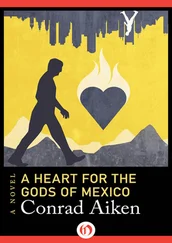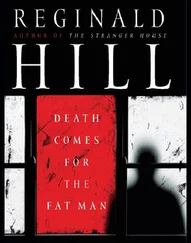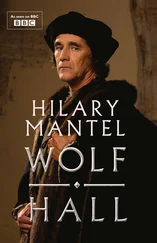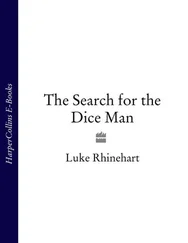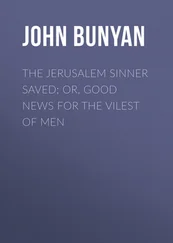“What is it exactly?”
“He said, ‘With your assistance...’ remember? ‘With your assistance , I’m going to steal five hundred thousand dollars on the last day of April.’ ”
“ Whose assistance?” Meyer asked.
“Ours, I guess,” Carella said.
“Or maybe yours personally ,” Hawes said. “You’re the one he was talking to.”
“That’s right, yeah,” Carella said.
“And the pictures have all been addressed to you.”
“Yeah.”
“Maybe he figures you’ve got something in common. Maybe all this crap is pegged directly at you.”
“We have got something in common,” Carella said.
“What’s that?”
“We shot each other. And survived.”
“So what do you think?” Hawes said.
“What do you mean?”
“If he’s pegging it at you, what do you think? Have you got any ideas?”
“Not a single one,” Carella said.
“Hoover and Washington,” Meyer said thoughtfully. “What have they got in common?”
“The Jesus Case,” as it was playfully dubbed by the heathens of the 87th Squad, was going nowhere very quickly. The dead man had still not been identified, and Carella knew that, unless a positive identification was made within the next few days, the case was in danger of being buried as deep as the corpse had been. Until they knew who he was, until they could say with certainty that this man with this name was slain by person or persons unknown, why then he would remain only what Dr. Cortez had labeled him last Monday: a corpse. Labels. A corpse. Anonymous. A lifeless heap of human rubble, unmissed, unreported, unidentified when it was buried in the municipal cemetery. There were too many murder victims in the city, all of them with names and addresses and relatives and histories. It was too much to ask of any overworked police department that it should spend valuable time trying to find the murderer of someone who had namelessly roamed the streets. A cipher never evokes much sympathy.
On Thursday morning, as Carella made his way from shop to shop in the Harrison Street area, it began raining heavily. The Jesus Case was now four days old. Carella knew that, unless he came up with something soon, the case would be thrown into the squad’s Open File. For all intents and purposes, such disposition would mean that the case was closed. Not solved, merely closed until something accidentally turned up on it weeks or months or years later, if ever. The idea of burying the case a scant two days after the body itself had been buried was extremely distasteful to Carella. Aside from his revulsion for the brutality of the crucifixion (if such it could be called; there had, after all, been no cross involved), Carella suspected that something deeper within him was being touched. He had not been inside a church since the day his sister got married, more than thirteen years ago, but he felt vague stirrings now, memories of priests with thuribles, the heavy musk of incense, altar boys in white, the crucified form of Jesus Christ high above the altar. He had not been a religious child, nor was he a religious man. But the murdered man was curiously linked in his mind to the spiritual concept of someone dying for humanity, and he could not accept the idea that the man in the abandoned tenement had died for nothing at all.
The rain swept the pavements like machine-gun fire in some gray disputed no-man’s land. A jagged lance of lightning crackled across the sky, followed by a boom of thunder that rattled Carella to his shoelaces. He ran for the nearest shop, threw open the door, shook water from his trench coat, and mopped his head with a handkerchief. Only then did he look around him. He first thought he was in an art gallery having a one-man show. He then realized he was in a sculptor’s shop, the artist’s work displayed on long tables and shelves, female nudes of various sizes sculpted in wood and stone, cast in plaster and bronze. The work was quite good, or at least it seemed so to Carella. Naturalistic, almost photographic, the nudes sat or stood or lay on their sides in frozen three-dimensional realism, some of them no larger than a fist, others standing some three or four feet tall. The artist had used the same model for all of the pieces, an obviously young girl, tall and slender, with small well-formed breasts and narrow hips, long hair trailing halfway down her back. The effect was of being in a mirrored room that reflected the same girl in a dozen different poses, shrinking her to less than human size and capturing her life force in materials firmer than flesh. Carella was studying one of the statues more closely when a man came out of the back room.
The man was in his late twenties, a tall blond man with dark brown eyes and a leonine head. He was on crutches. His left leg was heavily bandaged. A tattered white tennis sneaker was on his right foot.
There were, Carella surmised, possibly ten thousand men in this city at this moment who were wearing white tennis sneakers on their right feet, their left feet, and perhaps even both feet. He did not know how many of them had a shop on King’s Circle, though, four blocks from Harrison Street, where a boy had been nailed to the wall five days ago, and where a left-footed tennis sneaker had been found in an empty apartment down the hall.
“Yes, sir?” the man said. “May I help you?”
“I’m a police officer,” Carella said.
“Uh-huh,” the man said.
“Detective Carella, 87th Squad.”
“Uh-huh,” he said again. He did not ask for identification, and Carella did not show any.
“I’m investigating a homicide,” he said.
“I see.” The man nodded, and then hobbled on his crutches to one of the long tables. He sat on the edge of it, beside a sculpture of his slender young model at repose in bronze, legs crossed, head bent, eyes downcast like a naked nun. “My name’s Sanford Elliot,” he said. “Sandy, everybody calls me. Who was killed?”
“We don’t know. That’s why I’ve been going around the neighborhood.”
“When did it happen?” Elliot asked.
“Last Sunday night.”
“I was out of town last Sunday,” Elliot said, and Carella suddenly wondered why he felt compelled to establish an alibi for a murder that had thus far been discussed only in the most ambiguous terms.
“Really?” Carella said. “Where were you?”
“Boston. I went up to Boston for the weekend.”
“Nice up there,” Carella said.
“Yes.”
“Anyway, I’ve been showing a picture of the victim...”
“I don’t know too many people in the neighborhood,” Elliot said. “I’ve only been here in the city since January. I keep mostly to myself. Do my work in the studio back there, and try to sell it out front here. I don’t know too many people.”
“Well, lots of people come in and out of the shop, don’t they?” Carella said.
“Oh, sure. But unless they buy one of my pieces, I never get to know their names. You see what I mean?”
“Sure,” Carella said. “Why don’t you take a look at the picture, anyway?”
“Well, if you like. It won’t do any good, though. I really don’t know too many people around here.”
“Are you from Boston originally?”
“What?”
“You said you went up to Boston, I figured...”
“Oh. No, I’m from Oregon. But I went to art school up there. School of Fine Arts at B.U. Boston University.”
“And you say you were up there Sunday?”
“That’s right. I went up to see some friends. I’ve got a lot of friends in the Boston area.”
“But not too many around here.”
“No, not around here.”
“Did you hurt your leg before you went to Boston, or after you came back?”
Читать дальше

